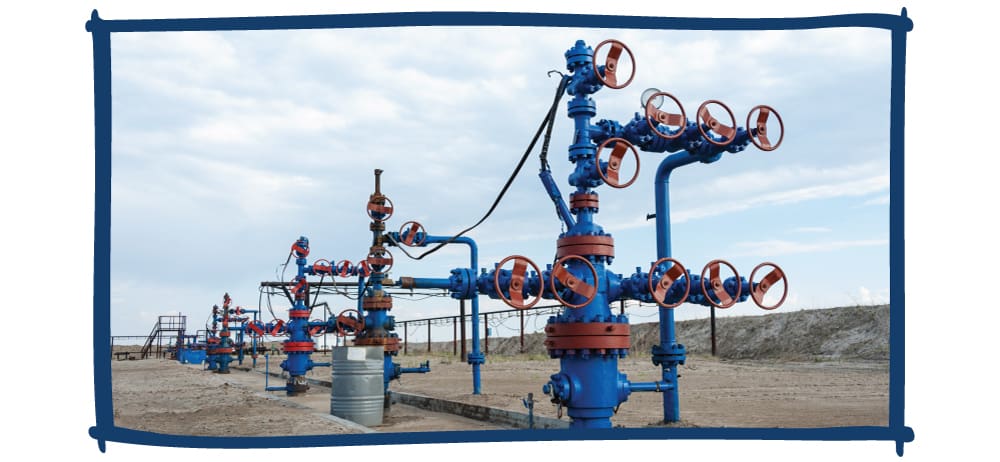Posted on June 12, 2024 by Karen Obenshain
In spring 2024, the National Petroleum Council (NPC), a federal advisory council to the United States Department of Energy (DOE), approved the study, “Charting the Course: Reducing GHG Emissions in the U.S. Natural Gas Value Chain.” The study looks at ways to reduce carbon dioxide (CO2) and methane (CH4) emissions across the U.S. natural gas supply chain (NGSC). This study is the result of a two-year effort by 200+ individuals, including representatives from the oil and gas industry, academia, finance, nonprofits, including ClearPath, Native American tribes and public interest organizations.
Why should we care about these emissions?
In the U.S., natural gas is an abundant resource with an estimated 100-year supply at current use rates. Natural gas delivers the 24/7 affordable power that heats our homes, secures our power grid and drives our economy. American innovation in novel drilling technologies has allowed the U.S. to become the world’s largest natural gas producer and exporter of LNG, ensuring a cleaner and more reliable domestic supply and providing energy security to our allies abroad. In 2023, we consumed 89.1 billion cubic feet per day of natural gas, the most on record and the average price was the lowest since 2020. Today, we have a roughly $117 billion annual natural gas market and methane emissions have decreased by 16% in the U.S. between 2005 and 2023.
Natural gas is primarily made up of the chemical compound methane (CH4). When natural gas enters the atmosphere via venting, flaring or leaks along the NGSC supply chain, CH4 can act as a greenhouse gas. The NPC study recommends that DOE continue to sponsor efforts to develop and deploy innovative measurement technologies and monitoring systems. These technologies and systems will be essential to understanding the magnitude of these leaks as well as allowing for rapid mitigation. Carbon dioxide (CO2) emissions primarily occur when natural gas is used as a fuel to power equipment to keep the natural gas moving through the NGSC. The NPC study recommends that the federal government coordinate policies and initiatives for low carbon technology demonstration and deployment within the NGSC, including the deployment of carbon capture and storage (CCS) at LNG facilities and scaling electrified solutions. Deploying technologies that can either capture CO2 emissions or eliminate them is an important step in reducing this GHG emissions from the NGSC.

Cheniere Energy’s Sabine Pass LNG Facility, Cameron Parish, Louisiana
Finding ways to reduce these emissions without compromising U.S. oil and gas production will help maintain U.S. leadership in this critical clean energy asset for decades to come, reducing GHG emissions at home as well as abroad.
What did the NPC find?
The study found that meaningfully reducing NGSC emissions is an important challenge that will require long-term and close collaboration among U.S. industry, government and researchers to develop a variety of supportive federal and state policies that encourage public-private, technology-based partnerships.
The study provides analyses of historical and current CO2 and CH4 emissions from the NGSC. A few highlights from these analyses include:
The study designed three scenarios to evaluate options for the potential future reduction of NGSC emissions through 2050:
The study identified five actions that are required to significantly reduce NGSC emissions by 2050:

Gas Production Wells
Why is this study important?
Natural gas has already played a massive role reducing CO2 emissions from the power sector in the United States. The Energy Information Administration estimates that the deployment of natural gas is responsible for nearly two-thirds of domestic emissions reductions between 2005 and 2019. Despite this important progress, the NGSC still creates greenhouse gas emissions that must be reduced to meet reduction goals. The NPC study contains numerous consensus-based and actionable recommendations for DOE, other federal and state agencies and industry-related organizations to consider to meet this challenge.
We know that the U.S. not only leads the way in natural gas exports, we also lead in natural gas innovation - producing the cleanest natural gas in the world. Following this study’s recommendations like deploying innovative monitoring technologies, harmonizing emissions reporting, and developing supportive regulations and market incentives will give credibility to our claim that the U.S. is the world leader in reducing GHG emissions from the NGSC.
